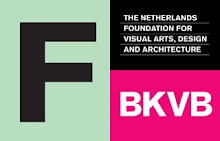Sunday, December 5, 2010
A cyclifier for Douala by 2012Architecten
For doual'art, 2012Architecten investigated waste-flows that can be redirected into useful purposes for Douala. Superuse of materials that have been neglected or not yet been discovered. This quick scan is part of a three year project in which 2012Architecten want to realize a program or venue that interacts with one or more of these flows and supports a purposeful and sustainable production. This is what 2012Architecten call a cyclifier.
Douala waste-flows
For consumer and small scale building products it immediately became clear that waste is virtually non-existent in the chain of use till a product and the parts of it literally start falling and crumbling apart. The Cameronese happen to be really inventive when it comes to inventing purposes for items that have already served a lifetime. The fridges for example are used a second or even third time, and when the cooling system is irreparable, they are sold to fishermen and their resellers who use the fridges horizontally filling it with fish to keep their products as fresh as possible.
Economically this means that the relative price of second hand goods compared to new products is much higher as it is in Europe, instead of 1/3 or half the price in Douala second hand goods in the informal market can be as high as 90 or 80% of the price of a new product or the product it was taken from. The degraded products generally end up in landfills or are burned on piles even inside the city.
Although in principle everything is re-used and superused, this doesn't mean you won't see piles of materials scattered over the city that clearly have been untouched for quite some time. The reason seems to be that owners seem not to care about it until someone is interested and then ask a price too high to make a deal. Another more promising flow consists of objects in the city that officially have been ordered to be removed. They can be recognized by a red X with signs around it indicating the date of removal by the authorities. Before that, the owner can remove it himself but given the abundance of crosses that are out of date, this deadline is seemingly not taken very seriously. A third opportunity for re-use lies in items too big to be transported within the budget limits of the informal economy. Carcasses of broken trucks, industrial pipes and constructions seem to be neglected by the re-use society.
Socapalm Palmoil Symbiosis
After speaking to the former chairman of the Cameroon Architects Union, the brother of the king Manga Douala-Bell, it was suggested to investigate the palm industry since there is a general neglect of felled palms in the plantations. If treated well, they could supply perfect construction timber that would not only be cheaper than other timber, but would also reduce the general felling of trees.
The team of 2012Architecten visited Socapalm, owner of the largest plantations of palm-oil palms, and interviewed the managing director of their 6,000 hectares Douala plantation. The team entered an unexpected paradise of industrial symbiosis with many flows contributing to activities within or outside the palm-oil production process. Examples such as self refined bio-diesel fuelling the transport trucks and remains of harvest being transformed in electric power for the offices and homes on and around the plantation (see our schematic analysis). Socapalm now cuts trees that are between 25 and 30 years old and leave the trees on site planting new trees in between. They allow local inhabitants to harvest wine from the palms and sell it along the road. Apart from the palm trees, the company owns rubber tree plantations too, of which the trees need to be removed after felling. According to the managing director there is no purpose for this wood, which would have good potential for use in small-scale construction.
When visiting a field, measuring a couple of hectares with palm trees being felled three months ago, 2012Architecten experienced how locals harvest the palm-wine from the trunks. The crown of the tree is cleaned and a bag is put over it. The wine immediately starts flowing. The bags are emptied, and the crowns are cleaned a couple of times a day for maximum of six weeks. Calculations show that about 200 liters of palm-wine can be taken from one tree. Directly taken from the tree, palm-wine is very sweet. After bottling, the sugars start fermenting immediately and the taste changes as alcohol starts forming up until about 10%.
Cyclifer options for Douala
The team’s first ideas for a cyclifier intervention consist of a new bar in town, selling the wine directly from the tree. After emptying the tree, it can be used or sold for local construction. In the palm oil plantation scheme they added some more options that will be further researched in the future. A second option is to use the rubber-wood for constructing plantation workers’ homes.
On a bigger scale 2012Architecten is interested to have a closer look into the interaction with their natural surroundings of different industries and to investigate how the re-development of the harbor district of Douala could be a symbiotic cooperation of activities that constitute the metabolism of Douala.
www.superuse.org
Labels:
2012Architecten,
Cyclifier,
SUD,
SUD2010
Subscribe to:
Post Comments (Atom)








more background on these concepts can be found at www.recyclicity.org and www.2012architecten.nl
ReplyDelete